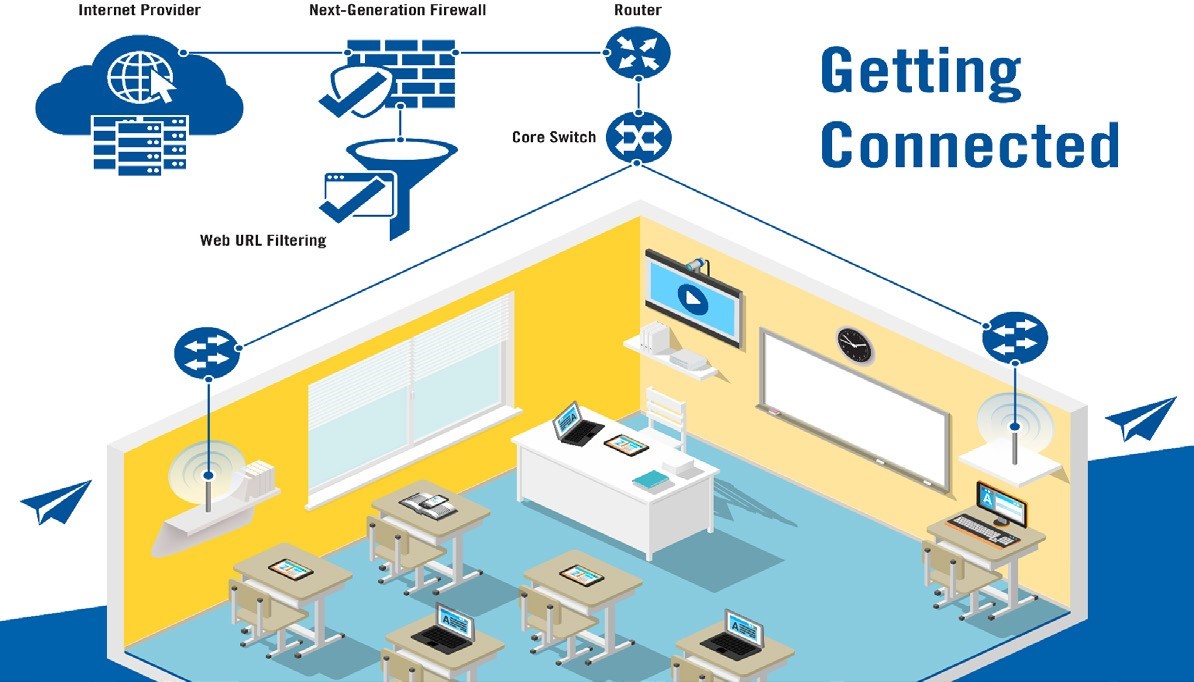Priorities
 Networks for the Future
Networks for the Future
With the changing pedagogical approaches to personalized learning for all students and the advent of more powerful technologies, wired and wireless, the importance of forward-looking network design is evolving at a rapid pace. Historically network design focused on the connection between  school campuses, the regional/district data center and the internet service provider. Bottlenecks often occurred at the WAN between the school campus and the district data center. With the advent of cloud-based services and applications, less data is physically stored at the district data center. Instead data is stored in the cloud and can be accessed as needed through the internet. Districts must now carefully monitor traffic through their entire network from the local building level, through any district or regional WAN and on to the internet service provider. Technology leaders should allocate adequate bandwidth at the state, regional and building level, as needed, to mitigate disruptions. As discussed in CoSN’s Smart Network by Design, decisions about data storage and software hosting significantly impact network design and capacity. Cloud computing won’t solve the bottleneck of inefficient networking.
school campuses, the regional/district data center and the internet service provider. Bottlenecks often occurred at the WAN between the school campus and the district data center. With the advent of cloud-based services and applications, less data is physically stored at the district data center. Instead data is stored in the cloud and can be accessed as needed through the internet. Districts must now carefully monitor traffic through their entire network from the local building level, through any district or regional WAN and on to the internet service provider. Technology leaders should allocate adequate bandwidth at the state, regional and building level, as needed, to mitigate disruptions. As discussed in CoSN’s Smart Network by Design, decisions about data storage and software hosting significantly impact network design and capacity. Cloud computing won’t solve the bottleneck of inefficient networking.
The importance of understanding network design and the stresses on the network as the requirements continue to change and grow have become more vital. Additionally, with many schools relying on wireless technology to supplement wired technology, the building infrastructure and layout of the classroom impacts the performance of the network. All wireless networks are not created equal and each building or facility has its own unique physical challenges, limitations and user demands that need to be taken into consideration when deploying a Wi-Fi service. Often wireless networks, which are becoming ubiquitous, are underperforming for the number of devices connected to them. Bottleneck problems are no longer occurring at just the WAN or ISP connections, but also in the wireless network. The utilization of WANs, cloud-based services and wireless networks all impact network design and capacity. In order to create sustainable, robust and reliable networks, administrators and technology leaders must look at the level of digital learning implementation and the administrative and security services relying on the network. These decisions will determine the amount of WAN capacity and ISP connection capacity required to meet those needs.
becoming ubiquitous, are underperforming for the number of devices connected to them. Bottleneck problems are no longer occurring at just the WAN or ISP connections, but also in the wireless network. The utilization of WANs, cloud-based services and wireless networks all impact network design and capacity. In order to create sustainable, robust and reliable networks, administrators and technology leaders must look at the level of digital learning implementation and the administrative and security services relying on the network. These decisions will determine the amount of WAN capacity and ISP connection capacity required to meet those needs.
